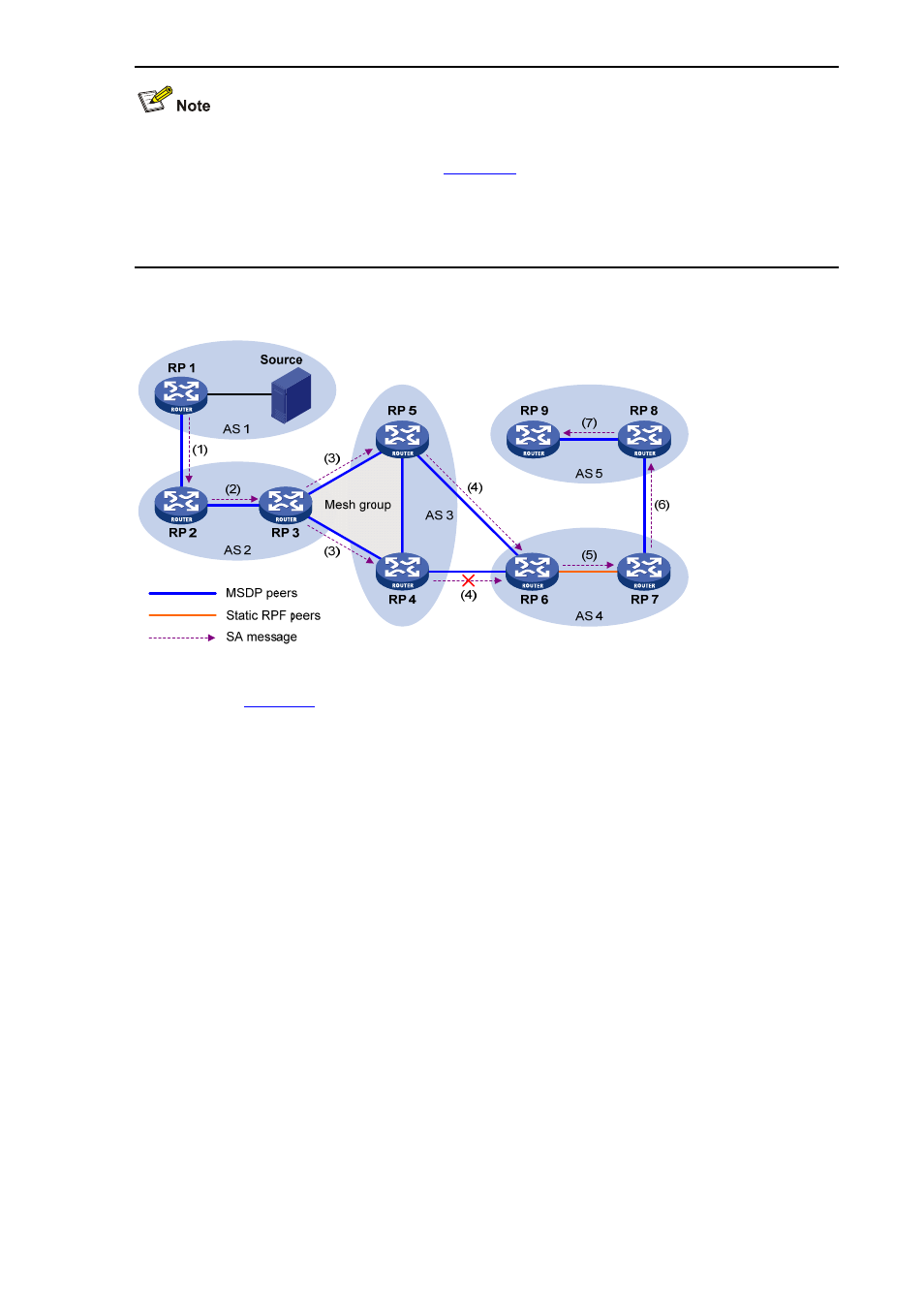H3C Technologies H3C S3600 Series Switches User Manual
Page 436

5-5
If only one MSDP peer exists in a PIM-SM domain, this PIM-SM domain is also called a stub domain.
For example, autonomous system AS 4 in
is a stub domain. The MSDP peer in a stub
domain can have multiple remote MSDP peers at the same time. You can configure one or more remote
MSDP peers as static RPF peers. When an RP receives an SA message from a static RPF peer, the RP
accepts the SA message and forwards it to other peers without performing an RPF check.
Figure 5-3 Diagram for RPF check for SA messages
, these MSDP peers dispose of SA messages according to the following RPF
check rules:
1) When RP 2 receives an SA message from RP 1
Because the source-side RP address carried in the SA message is the same as the MSDP peer
address, which means that the MSDP peer where the SA is from is the RP that has created the SA
message, RP 2 accepts the SA message and forwards it to its other MSDP peer (RP 3).
2) When RP 3 receives the SA message from RP 2
Because the SA message is from an MSDP peer (RP 2) in the same AS, and the MSDP peer is the next
hop on the optimal path to the source-side RP, RP 3 accepts the message and forwards it to other peers
(RP 4 and RP 5).
3) When RP 4 and RP 5 receive the SA message from RP 3
Because the SA message is from an MSDP peer (RP 3) in the same mesh group, RP 4 and RP 5 both
accept the SA message, but they do not forward the message to other members in the mesh group;
instead, they forward it to other MSDP peers (RP 6 in this example) out of the mesh group.
4) When RP 6 receives the SA messages from RP 4 and RP 5 (suppose RP 5 has a higher IP
address)
Although RP 4 and RP 5 are in the same SA (AS 3) and both are MSDP peers of RP 6, because RP 5
has a higher IP address, RP 6 accepts only the SA message from RP 5.
5) When RP 7 receives the SA message from RP 6
